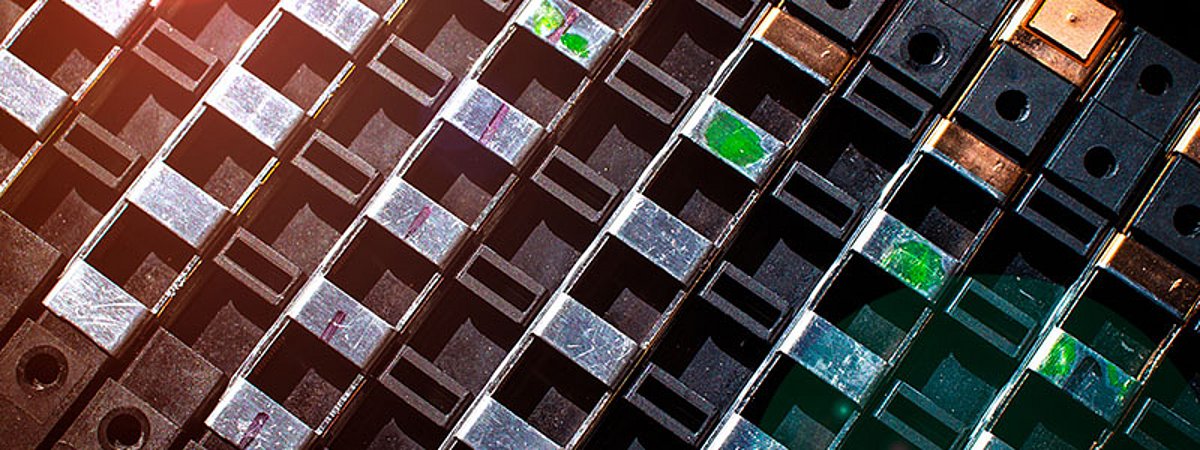Knowing what's in the battery with X-ray fluorescence measurement technology from Helmut Fischer

Lithium-ion battery cells keep things moving in electric cars. With measurement technology from Helmut Fischer, their composition can be precisely analyzed at any time. Volkswagen's global battery center also relies on proven measurement technology from Sindelfingen.
Electromobility is gaining momentum. One reason is the improved storage capacities of lithium-ion battery cells based on lithium nickel manganese cobalt oxide (NMC). This leads to an increasing range, which is why electric cars are also becoming increasingly attractive for longer distances. Particularly critical and therefore important for the electrical properties as well as the reliability of these NMC battery cells is, among other things, the chemical composition of the mixed oxides mentioned. Their composition and other relevant cell properties can be reliably determined using Helmut Fischer's energy-dispersive X-ray fluorescence analysis (XRF). Furthermore, with special instruments of the Fischerscope X-RAY XDV-µ series it is possible to analyze the chemical composition spatially resolved on a microscopic scale.
The instruments from Fischer's XDV-µ series form the high-end XRF series, which was developed for precise coating thickness measurement and material analysis on the smallest structures. Equipped with polycapillary optics resulting in high radiation intensity, the measurement time is drastically reduced compared to aperture optics. In addition to high spatial resolution, the XRF spectrometers also offer great flexibility for chemical analysis of multicomponent coatings, thickness measurements of complex coating systems, high sensitivity for trace detection, and the ability to measure ultrathin coatings. This makes them ideal for process control in battery production, where measurements are made locally at conspicuous points to detect foreign elements and contamination. The aim is to achieve battery cells that are as homogeneous as possible, as this has a decisive influence on the reliability and aging of the batteries. In Salzgitter, where the Volkswagen Group's global battery center is being built, precise and non-destructive XRF measurement technology from technology leader Helmut Fischer is already being used for process control and analysis. This offers a number of advantages over a scanning electron microscope with comparable measurement precision. Since no vacuum is required, the sample can be moved in such a way that large-area analyses are made possible by the automatic approach of measuring points. In addition, there is no need for time-consuming sample preparation.
